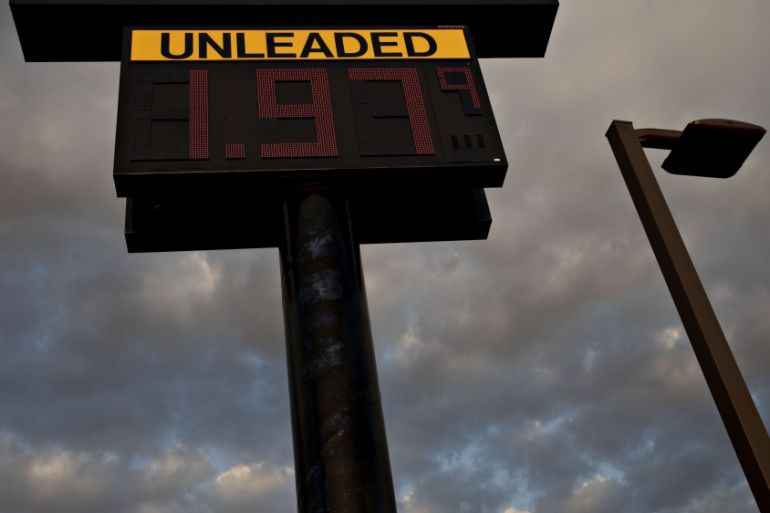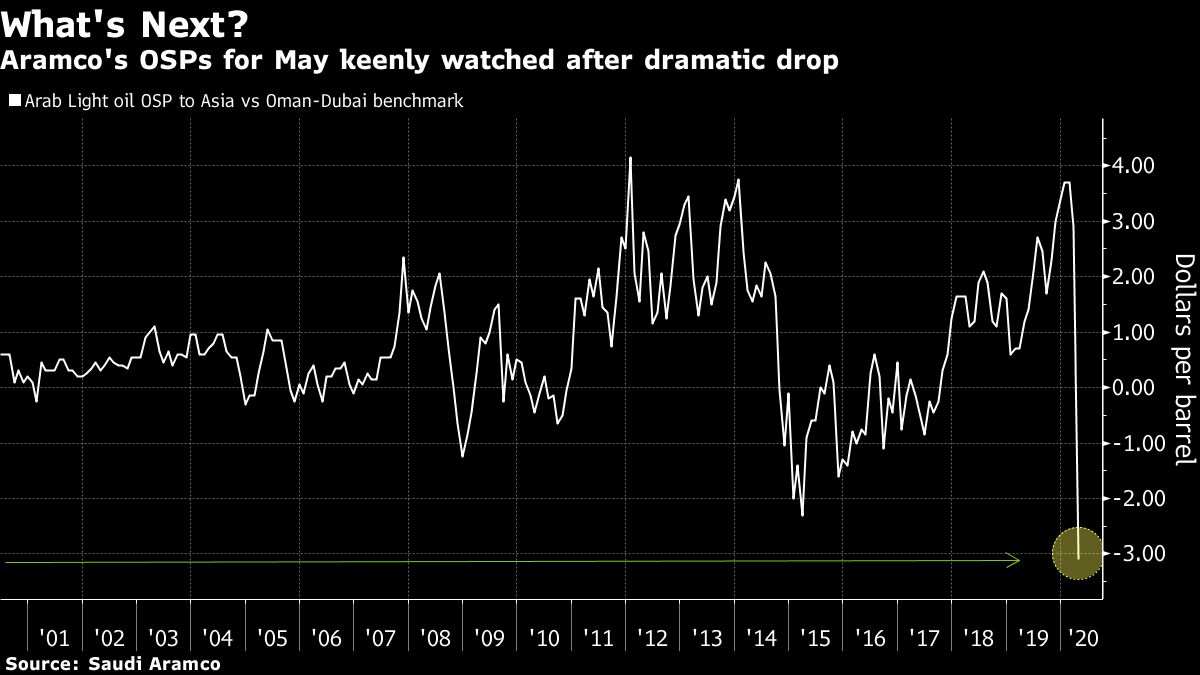Saudis face pricing dilemma as oil war enters a second month
With so many options on offer, Saudi Aramco needs to pull out all the stops to attract buying interest for its oil.

Vanishing demand and alternative grades at never-seen-before prices are fueling expectations that Saudi Aramco will need to price its crude at aggressively low levels this month to keep its customers satisfied.
The world’s biggest oil exporter is due to announce its official selling prices for May shipments this Sunday. It comes a month after the kingdom discounted April supplies by the most in at least 20 years as it embarked on a price war with Russia that sent oil markets into a tailspin.
Keep reading
list of 4 itemsMexico’s teachers seek relief from pandemic-era spike in school robberies
‘A bad chapter’: Tracing the origins of Ecuador’s rise in gang violence
Why is the US economy so resilient?
Where to pitch prices will be a tricky balancing act for Saudi Arabia. Set them too high and customers will buy as little as their term contracts allow against a backdrop of weak demand and rapidly filling storage tanks. If they’re too low, however, the self-inflicted pain of the price war could become intolerable.

Asian refiners are being spoiled for choice due to a flood of cheap crude from the U.S. and Russia. Varieties such as West Texas Intermediate, Mars and Urals are being offered and sold at sharp discounts, according to six officials and traders from processors across the region. The relative strength of Middle East’s Dubai benchmark versus London’s Brent isn’t doing Gulf sellers any favors.
For buyers in China, for example, Mars was sold at discounts of $8 a barrel or more against London’s Brent futures on a delivered basis. That’s likely to be lower than Saudi’s Arab Light crude after the addition of freight and other costs, should Aramco reduce its prices in-line with market expectations.
While cargoes from state-run Aramco may warrant a slight premium for supply security, official Saudi prices need to reflect the glut of crude and more affordable alternatives in the spot market, said the officials and traders who asked not to be identified due to internal company policy.
Aramco declined to comment when contacted by email.
Not Business-as-Usual
Saudi Aramco releases OSPs every month, with buyers saying how much oil they want a few days after the prices are set. Customers have the option to take volumes in a range around what’s stipulated under long-term contracts. Once the nominations are made, the Saudis inform buyers of the supplies they’ll get in what’s known as the allocation process.
This month promises to be different though. Indian state-owned refiners have said they’re looking to back out of crude purchases after declaring force majeure on oil imports following a nationwide lockdown that’s sent fuel demand plummeting.
U.S. President Donald Trump has also thrown a wildcard into the mix, suggesting Thursday that he’s brokered a deal with the Saudis and Russia to cut production, spurring a surge in prices. The OPEC coalition is now rushing to pull together a virtual meeting of its members — and possibly other oil-producing nations — on Monday following Trump’s claim, according to two delegates.
As well as North American and Russian alternatives, supplies from other Persian Gulf producers are available to Asian buyers. Abu Dhabi’s state-owned marketer Adnoc and Iraq’s SOMO have been offering April and May supplies of grades such as Murban, Das, Upper Zakum and Basrah in the last week or two.
With so many options on offer, Saudi Aramco will need to pull out all the stops to attract buying interest for the 12 million-plus barrels a day of oil it’s pumping. Demand for the kingdom’s crude is also being challenged by a fleet of tankers that are heading toward Asia on bets the world’s main demand center is a good place to hoard oil until market conditions improve.